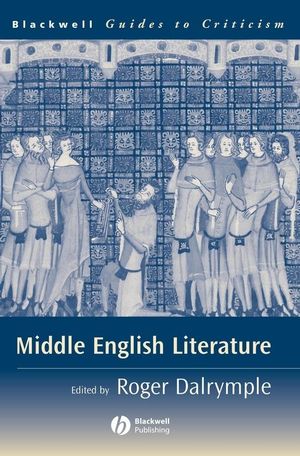|
Textbook
Middle English LiteratureISBN: 978-0-631-23290-2
Paperback
288 pages
July 2004, ©2004, Wiley-Blackwell
 This is a Print-on-Demand title. It will be printed specifically to fill your order. Please allow an additional 10-15 days delivery time. The book is not returnable.
Other Available Formats: Hardcover
|
||||||
Preface.
Acknowledgements.
1. Authorship:.
John Lydgate: The Critical Approach: Derek Pearsall (1970).
Literary Theory and Literary Practice: Alastair Minnis.
Authority: Tim William Machan (1994).
2. Textual Form:.
The Hoole Book: Derek Brewer (1963).
Division and Failure in Gower’s Confessio Amantis: Hugh White (1988).
3. Genre:.
Middle English Narrative Genres: Paul Strohm (1980).
The Religious Tradition: Piero Boitani (1982).
4. Language, Style, Rhetoric:.
Early Middle English Narrative Style: A.C. Spearing (1987).
The Language of Service and Household Rhetoric in the Letters of the Paston Women: Diane Watt (1993).
Three Languages: Thorlac Turville-Petre (1996).
5. Allegory:.
Patristic Criticism: The Opposition: E. Talbot Donaldson (1960).
The Poets: Siegfried Wenzel (1967).
Intellectual and Religious Interpretations: Kathryn Hume (1975).
Allegorical Buildings in Medieval Literature: Jill Mann (1994).
6. Literature and History:.
Constructing Social Realities: Helen Barr (2001).
Economics: John Bowers (2001).
7. Gender:.
Sexual Economics: Chaucer’s Wife of Bath and The Book of Margery Kempe: Sheila Delany (1983).
Medieval Medical Views of Women and Female Spirituality in the Ancrene Wisse and Julian of Norwich’s Showings: Elizabeth Robertson (1993).
No Pain, No Gain: Violence as Symbolic Capital in Malory’s Morte Darthur : Laurie A. Finke and Martin B. Schichtman (1998).
8. Identity:.
Characterisation in the Mystery Cycles: A Critical Prologue: David Mills (1983).
‘In Arthurus Day’: Community, Virtue, and Individual Identity in Sir Gawain and the Green Knight: David Aers (1988).
Troilus and Criseyde and Subjectivity: Lee Patterson (1991).
Afterword.
Bibliography.
Index



